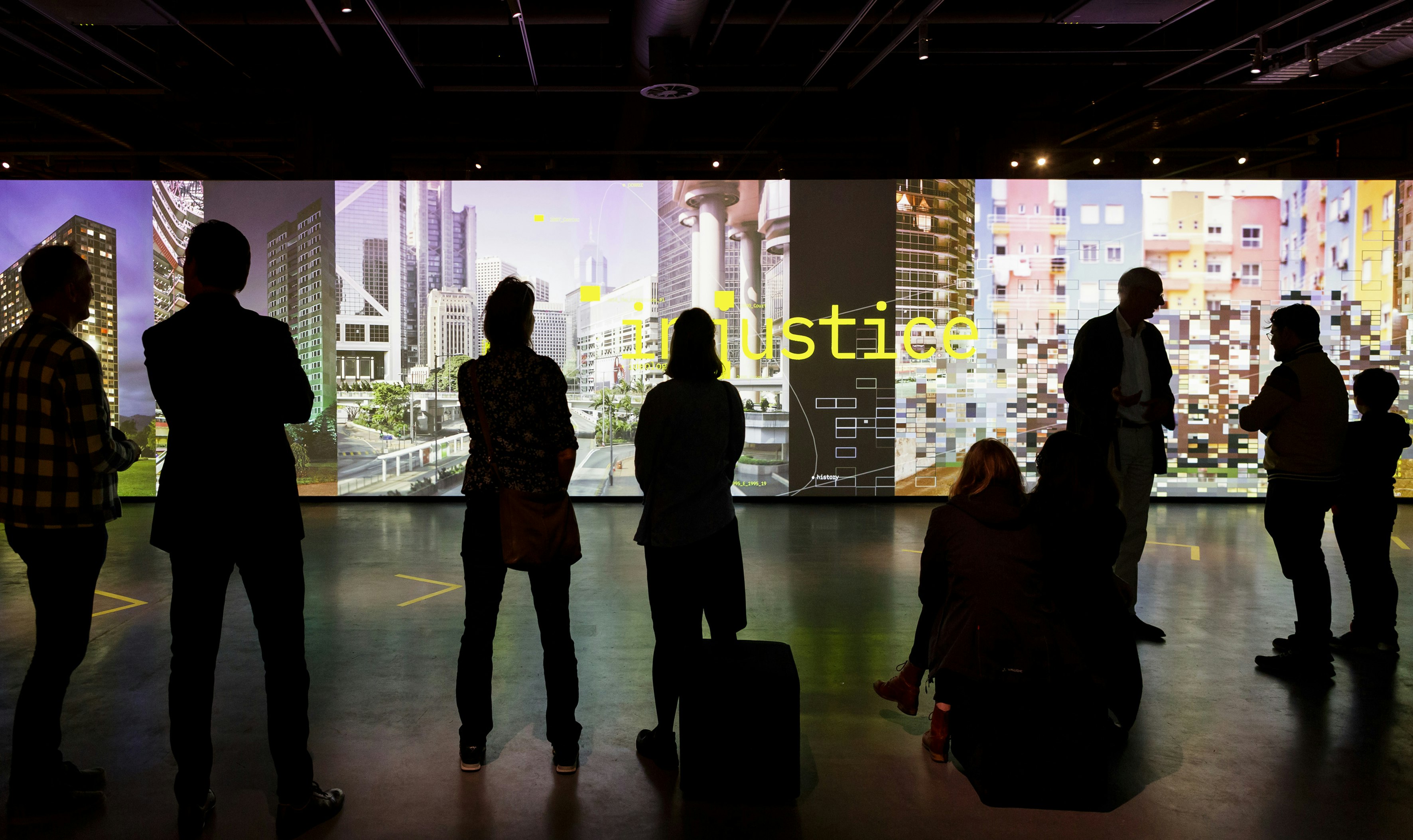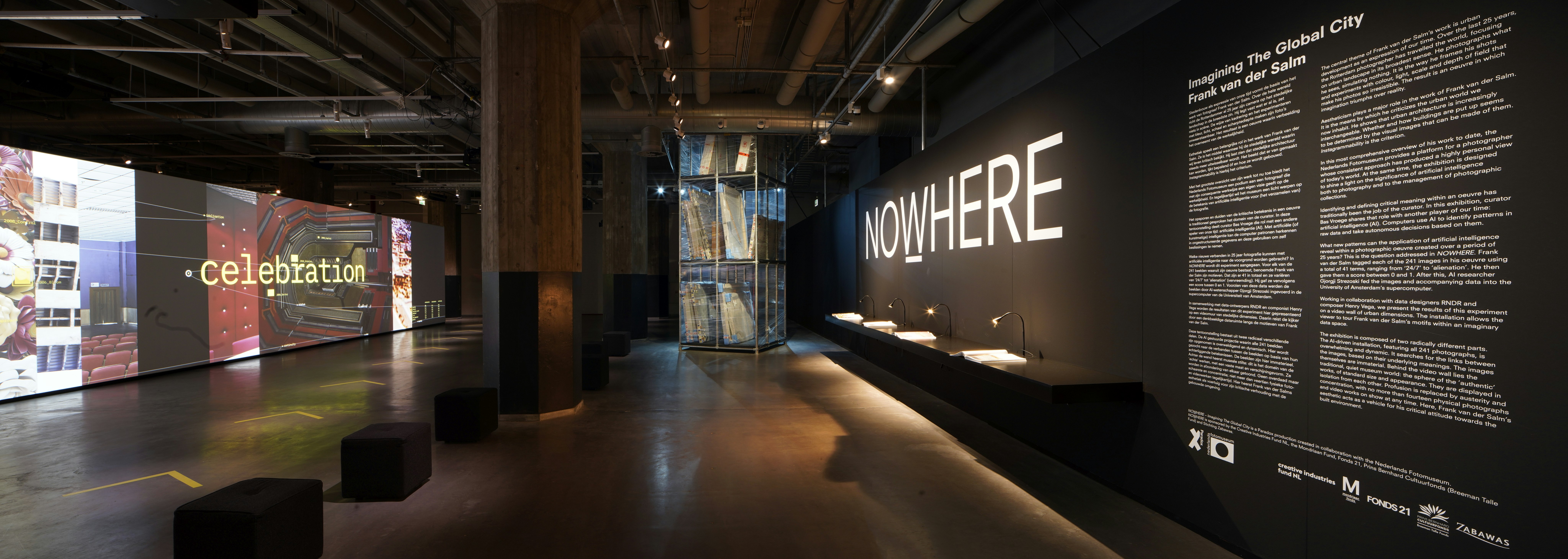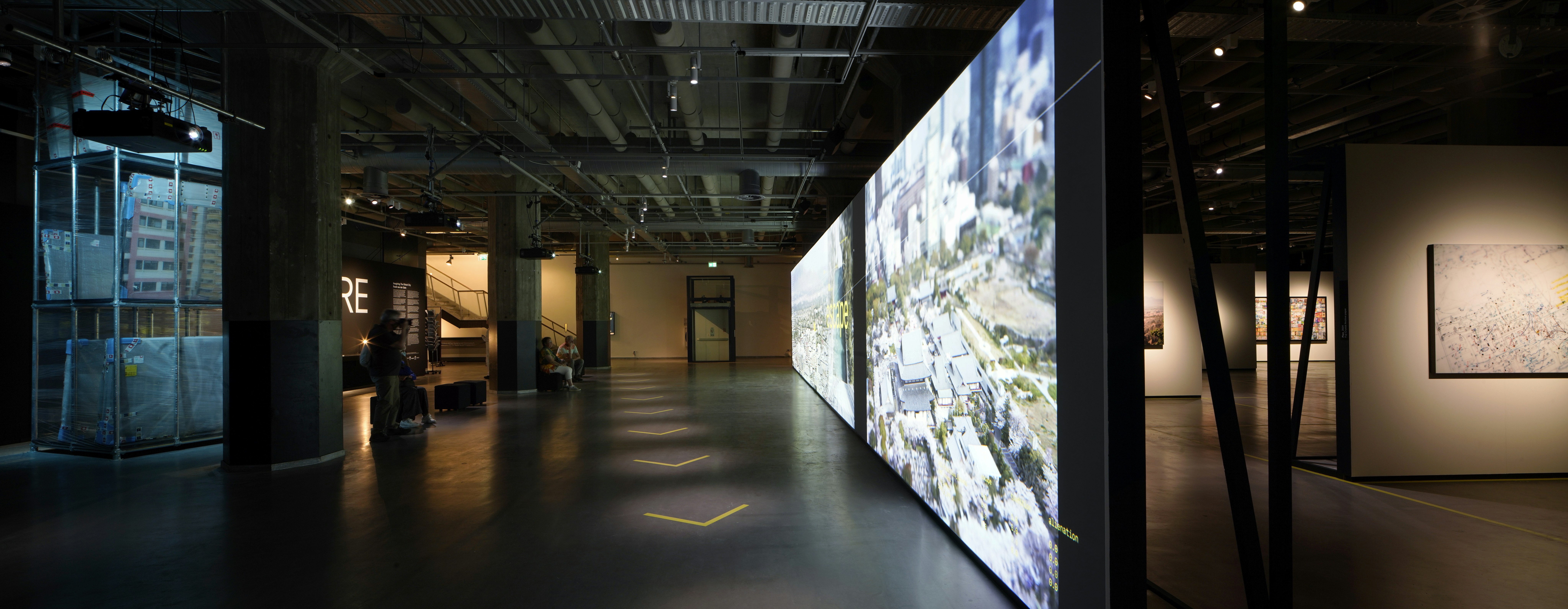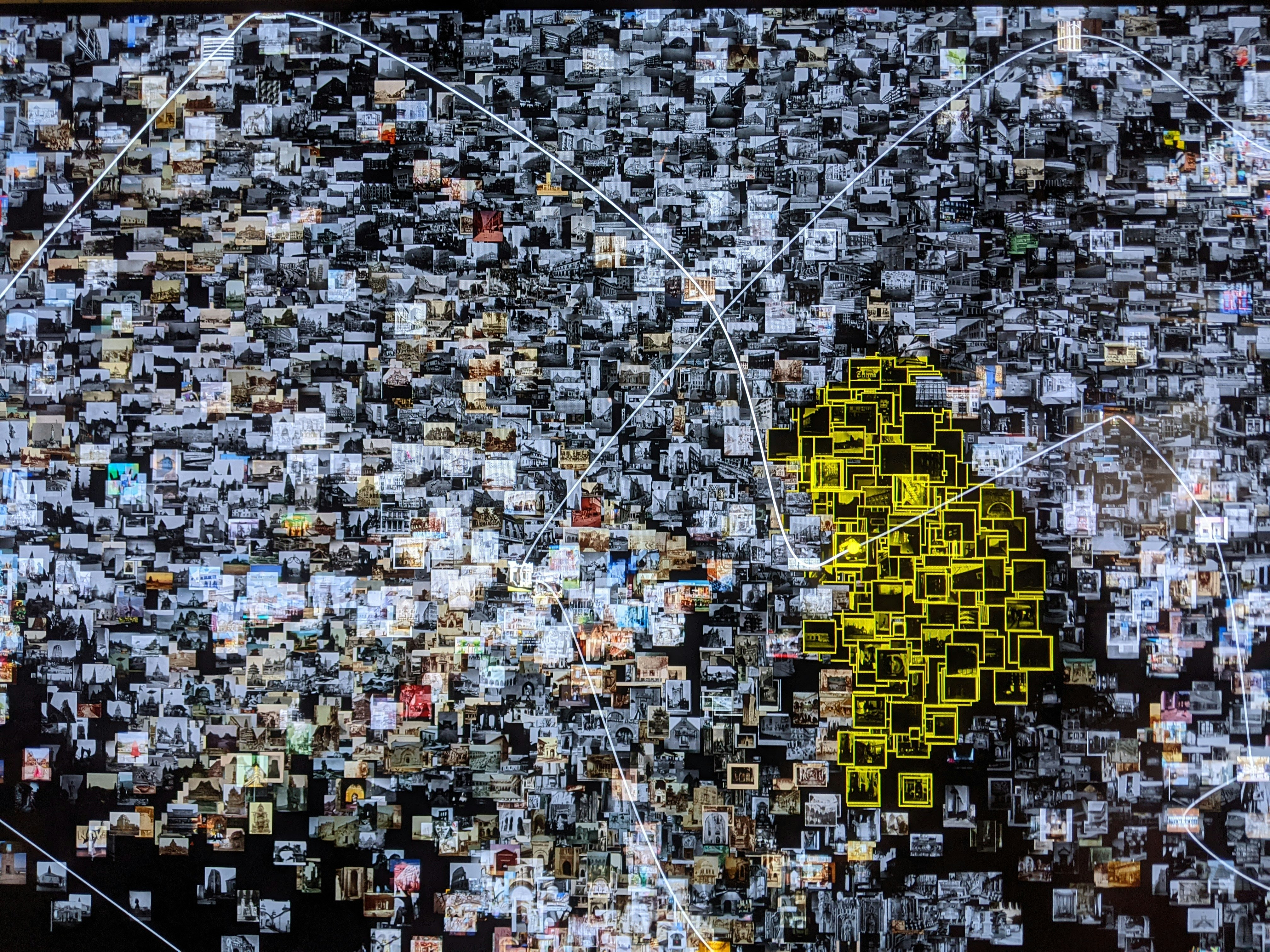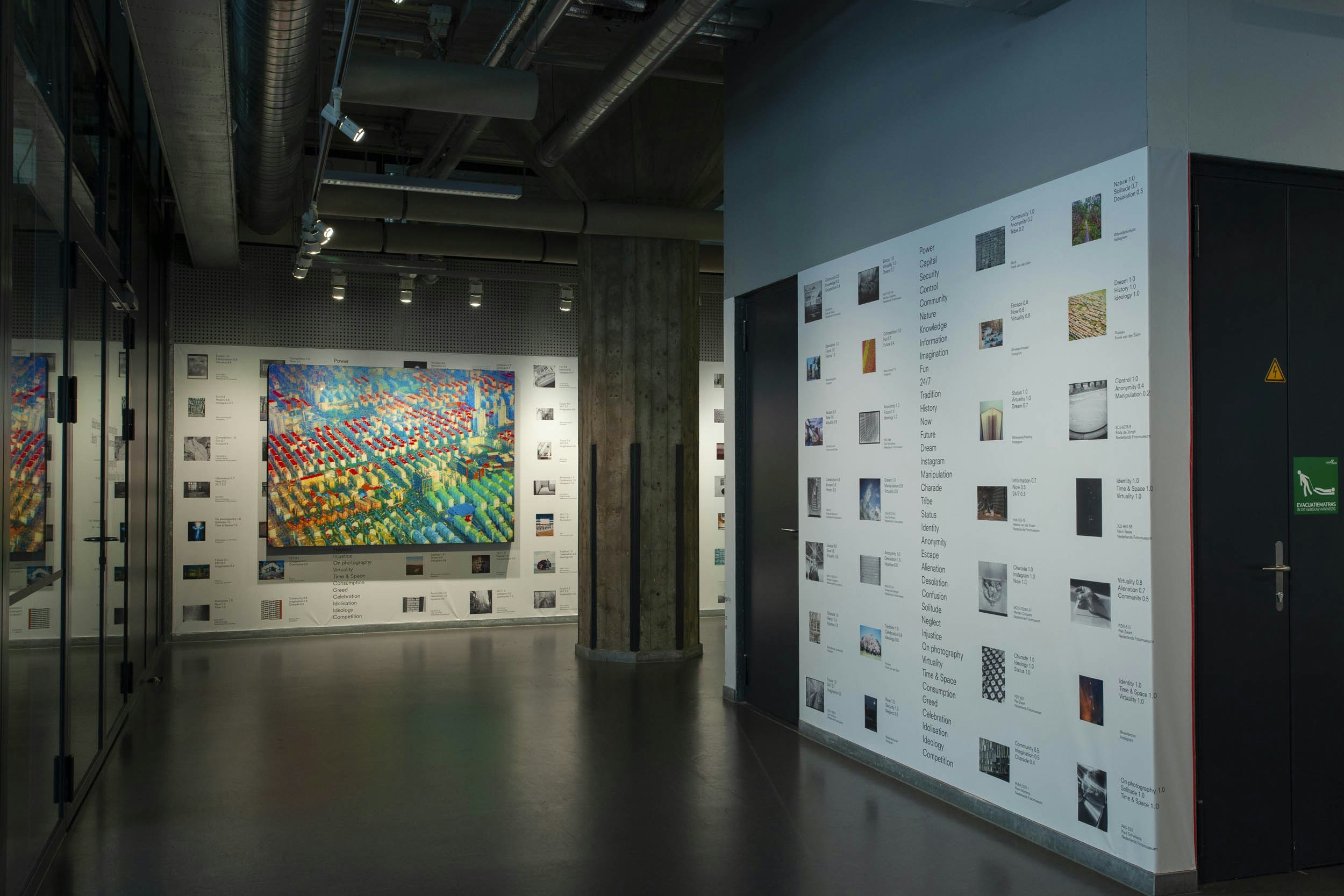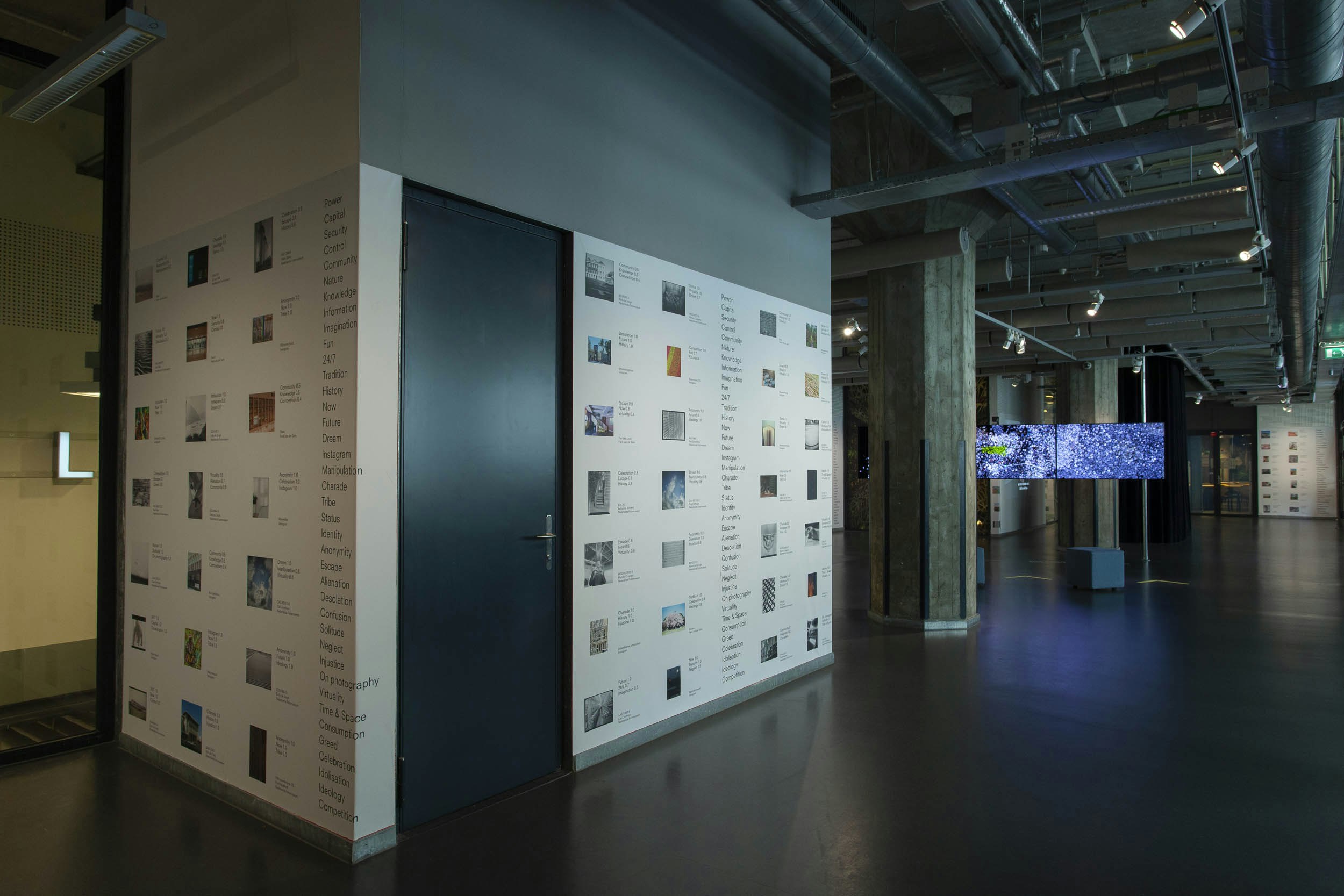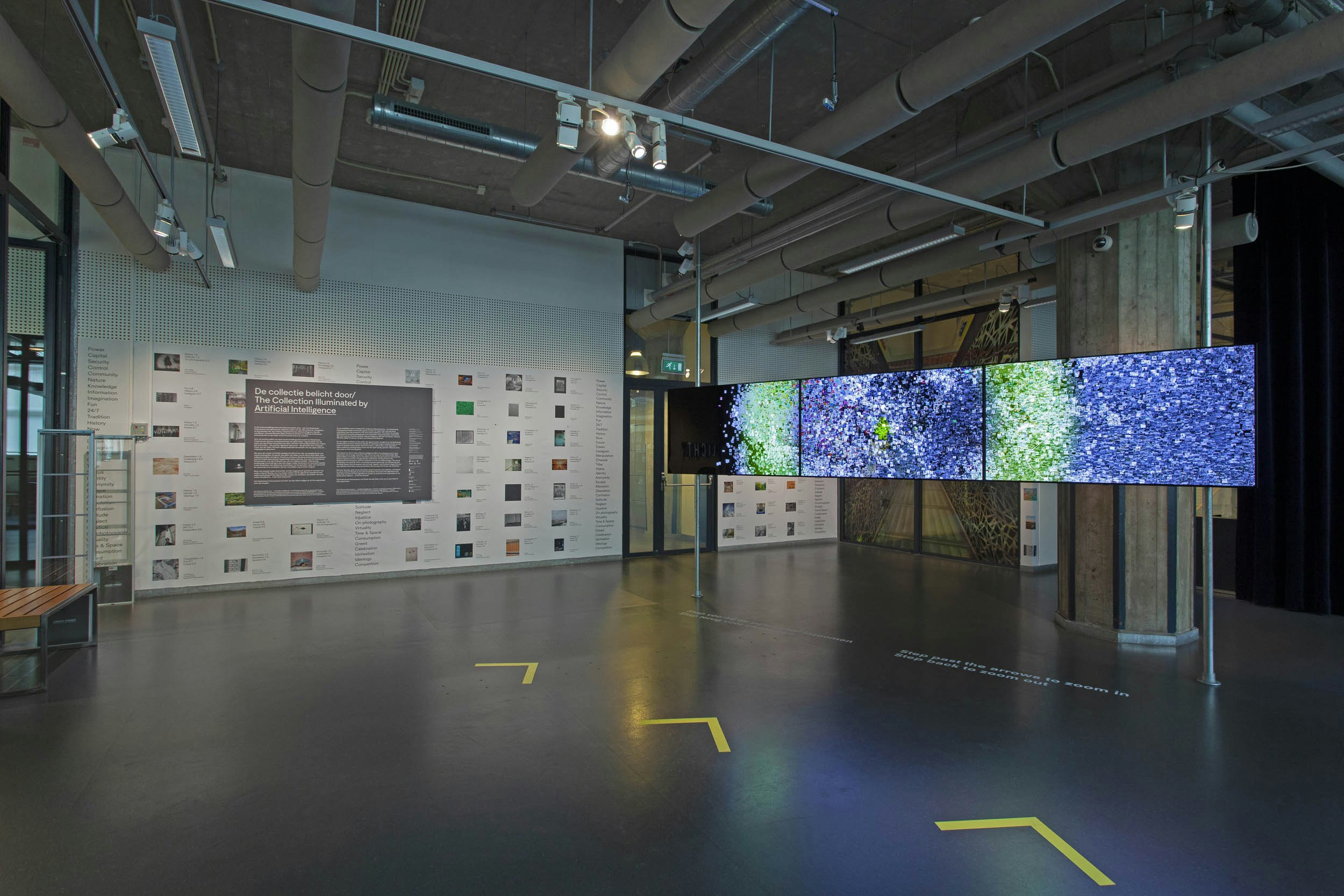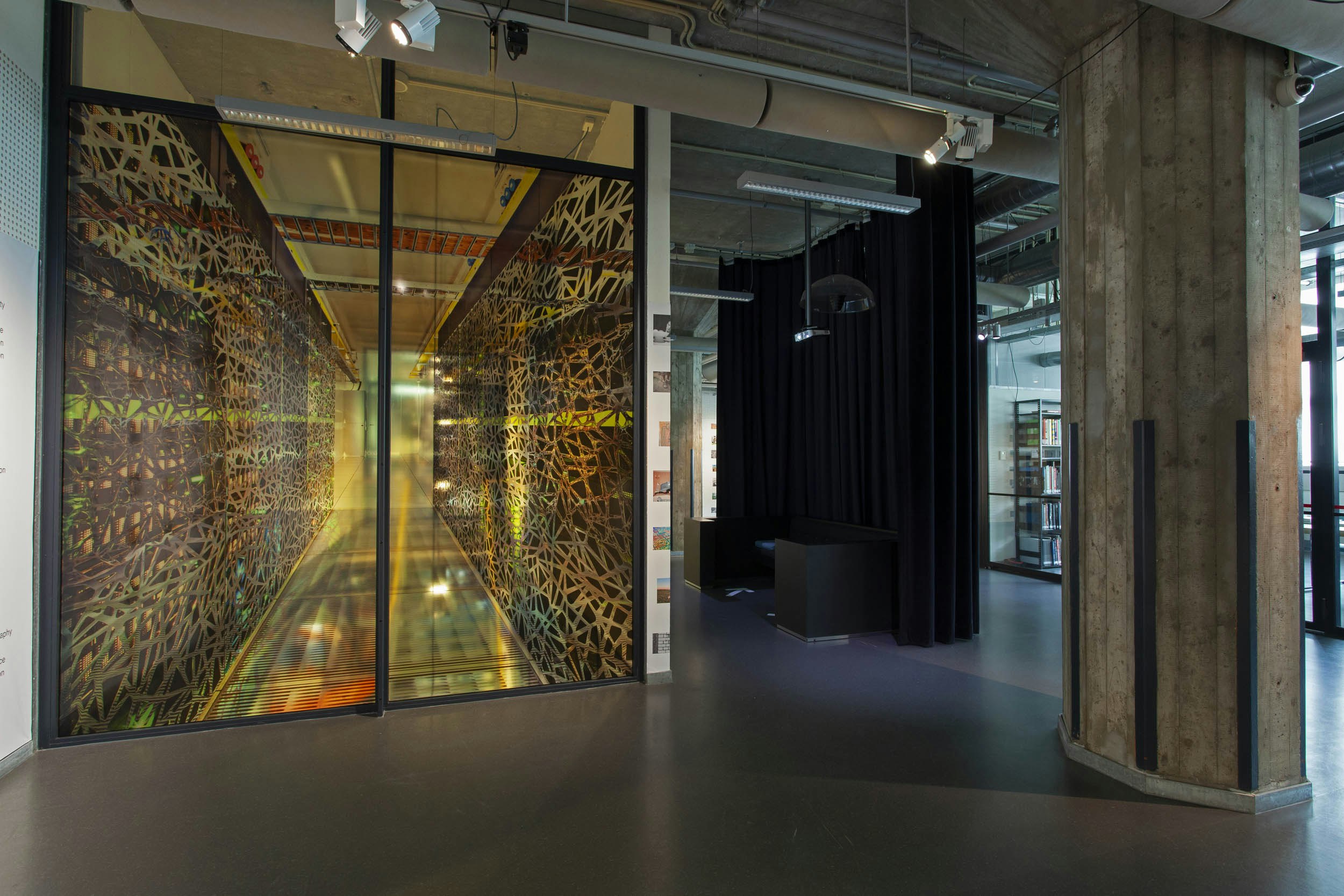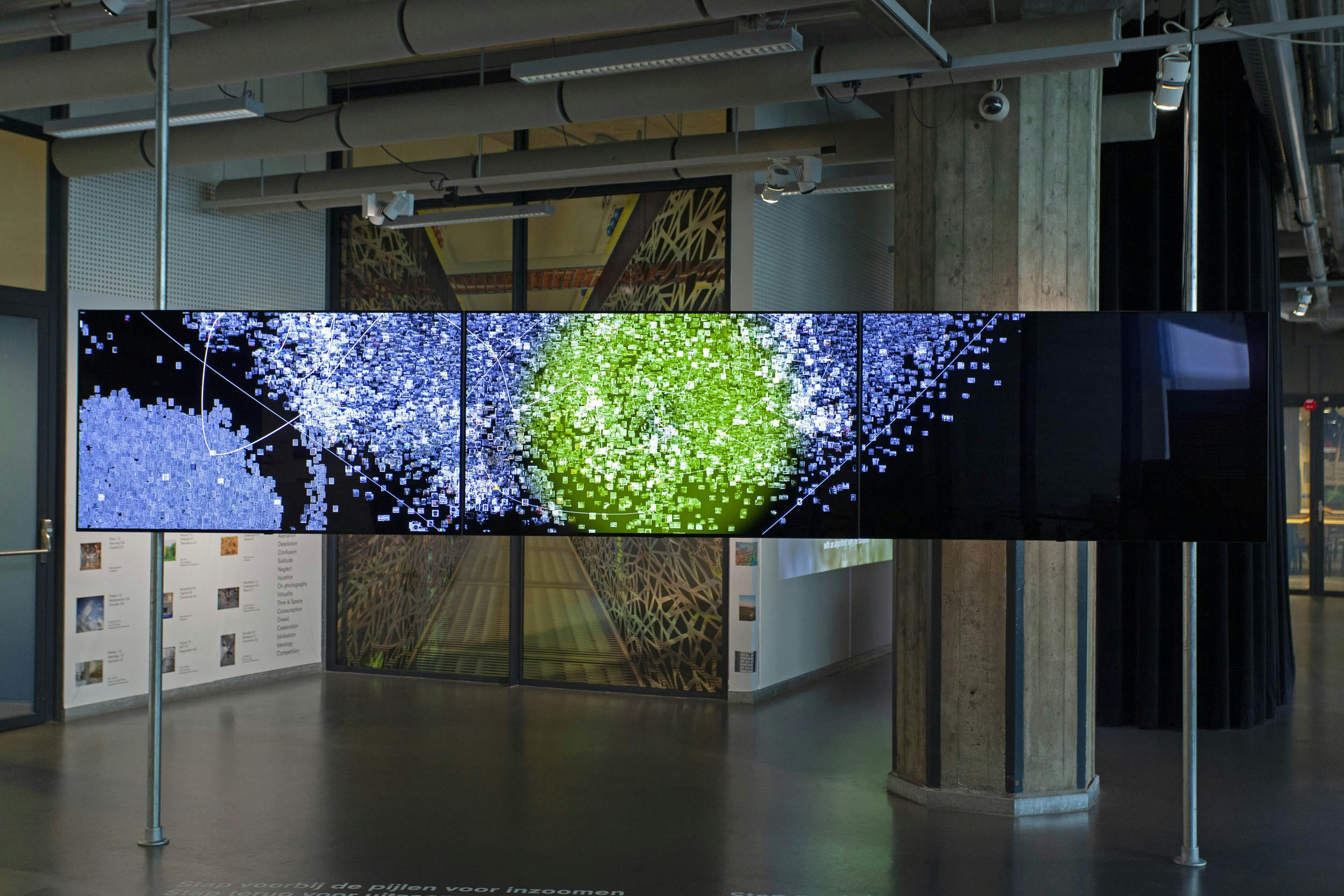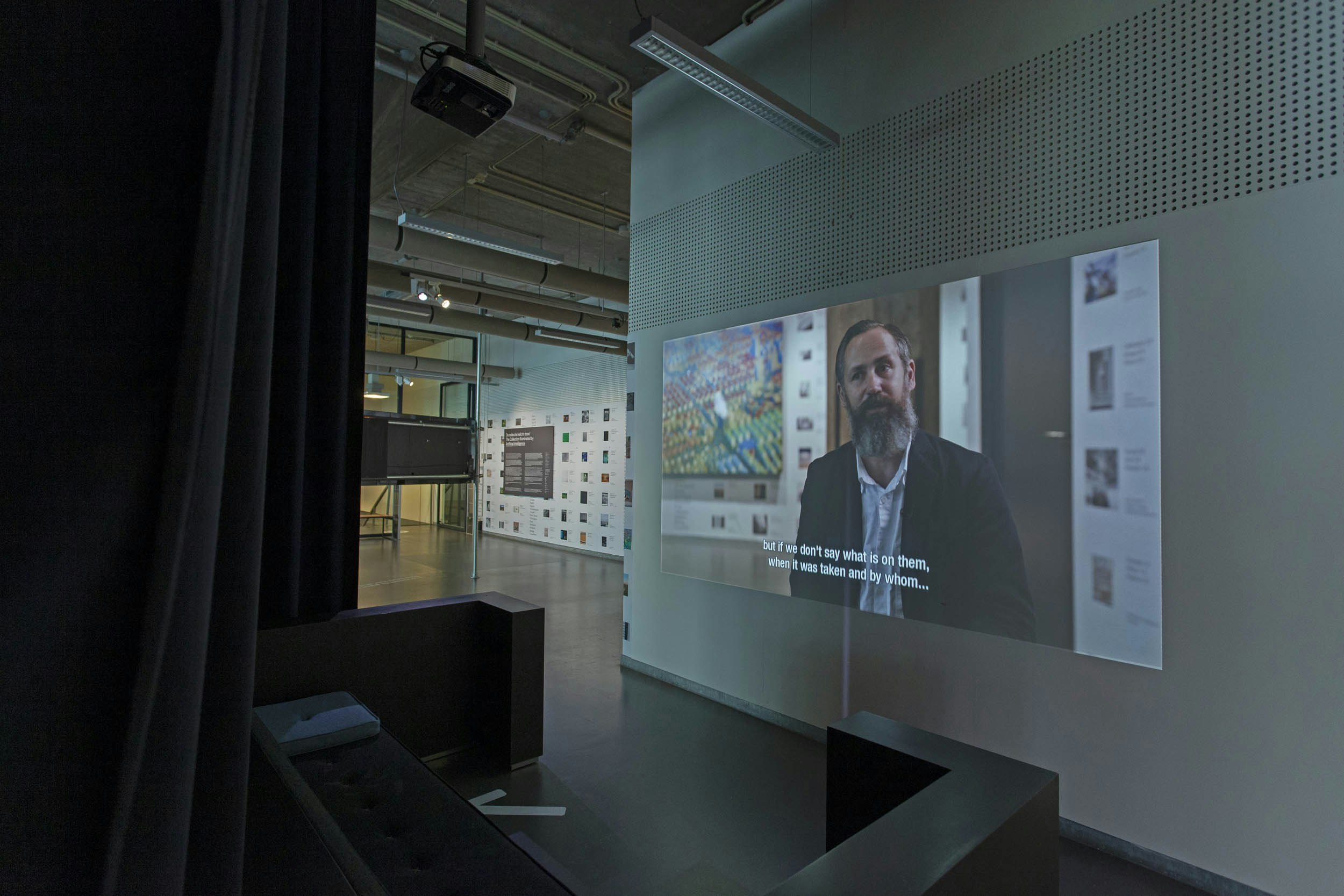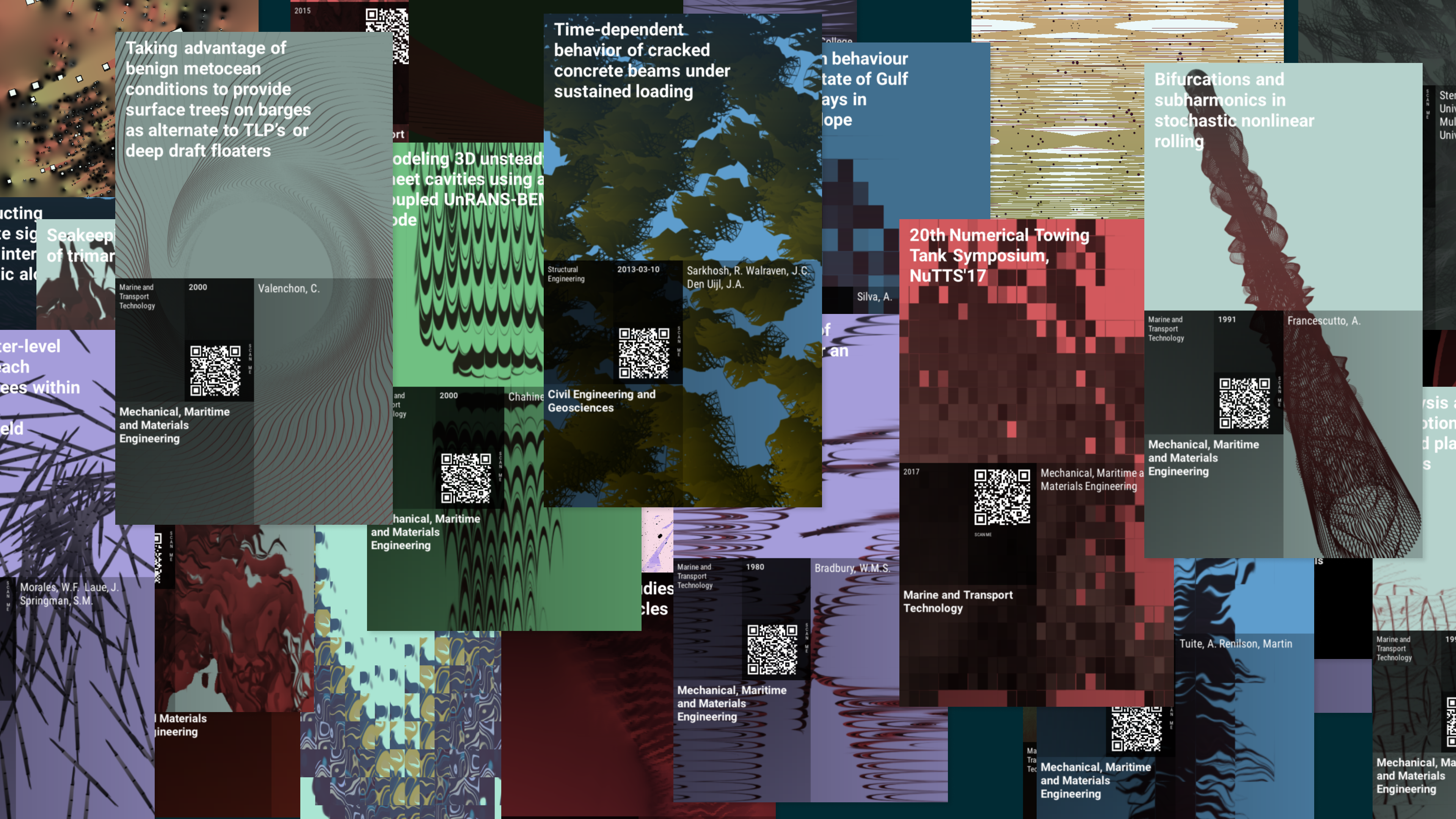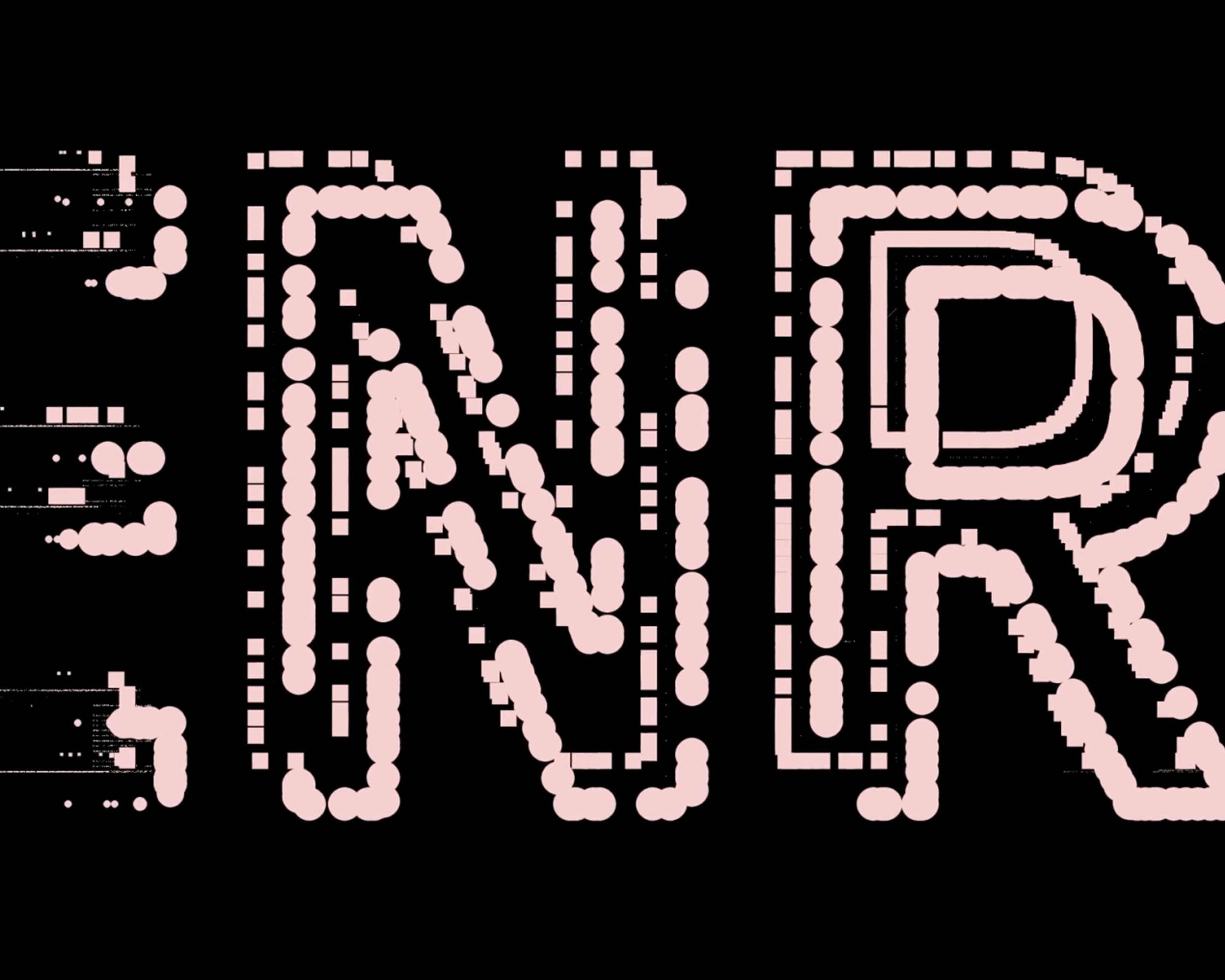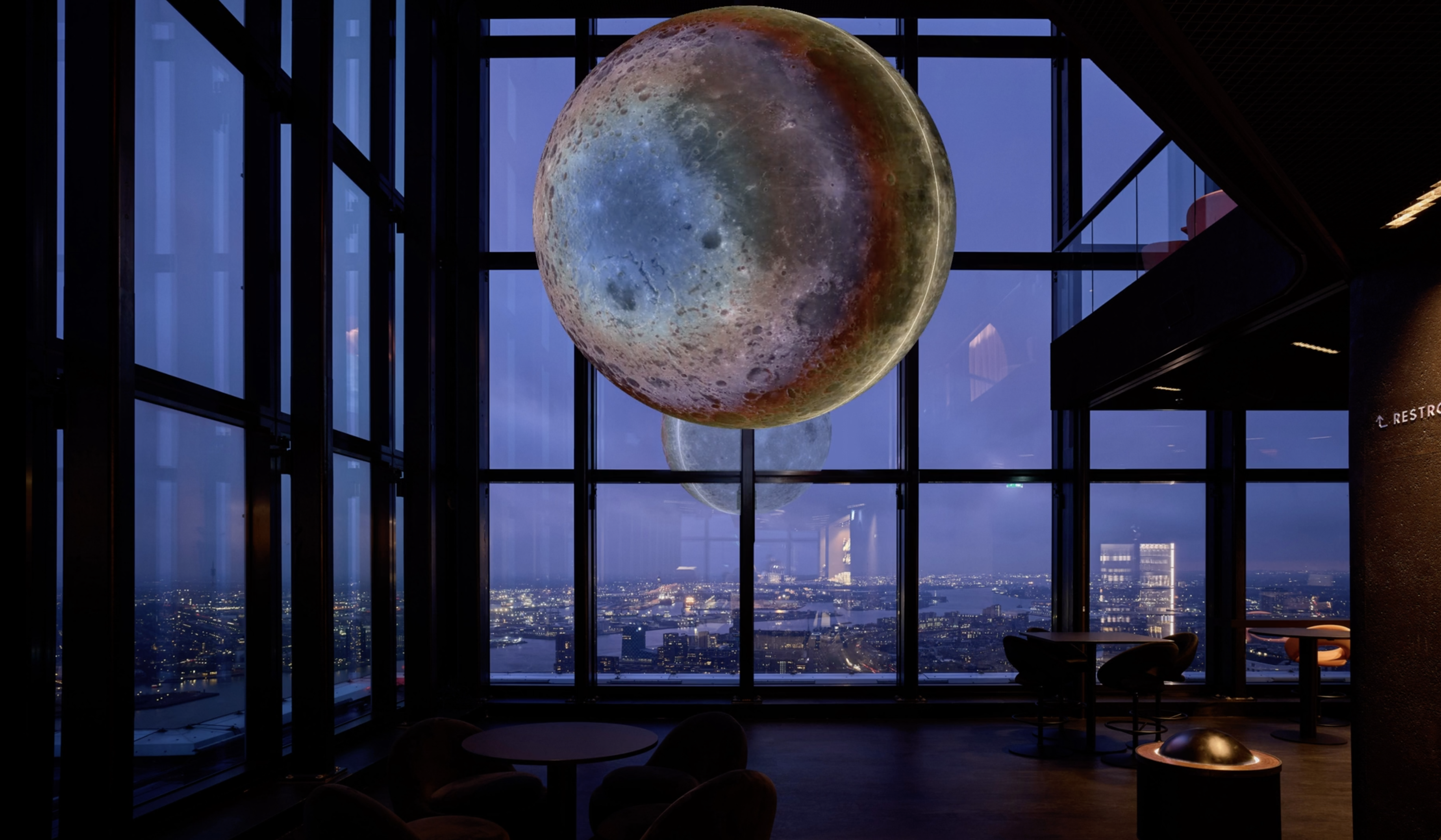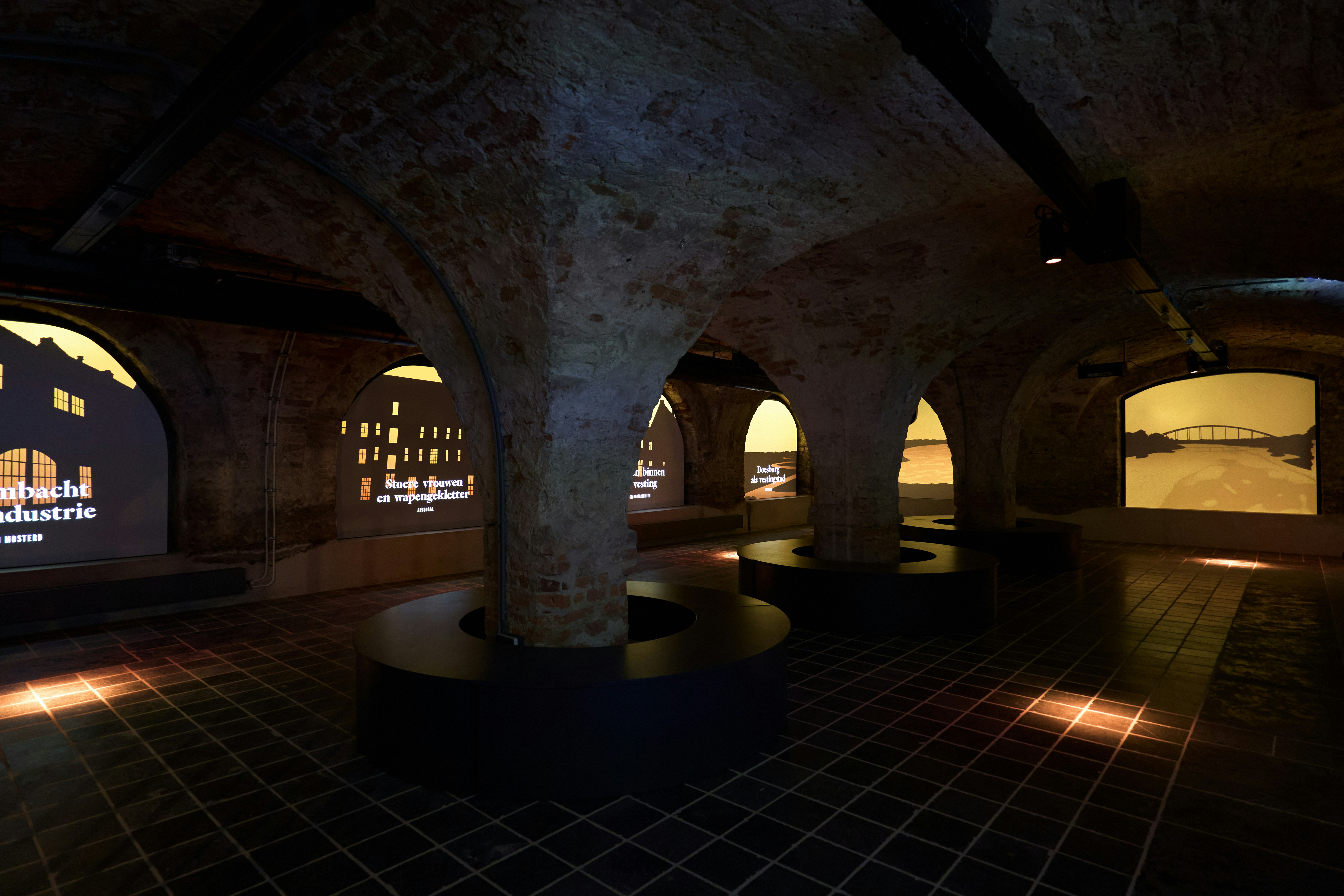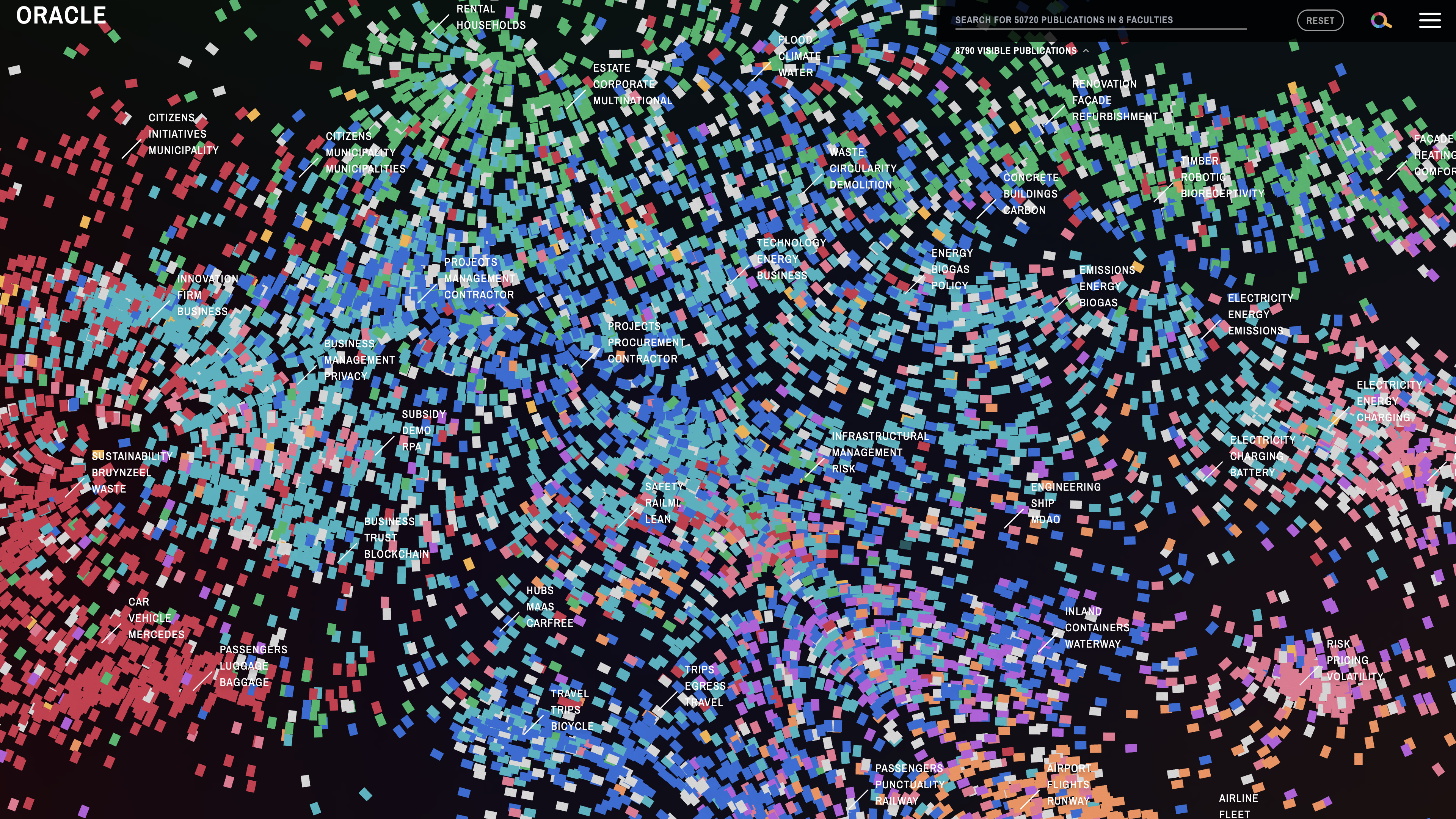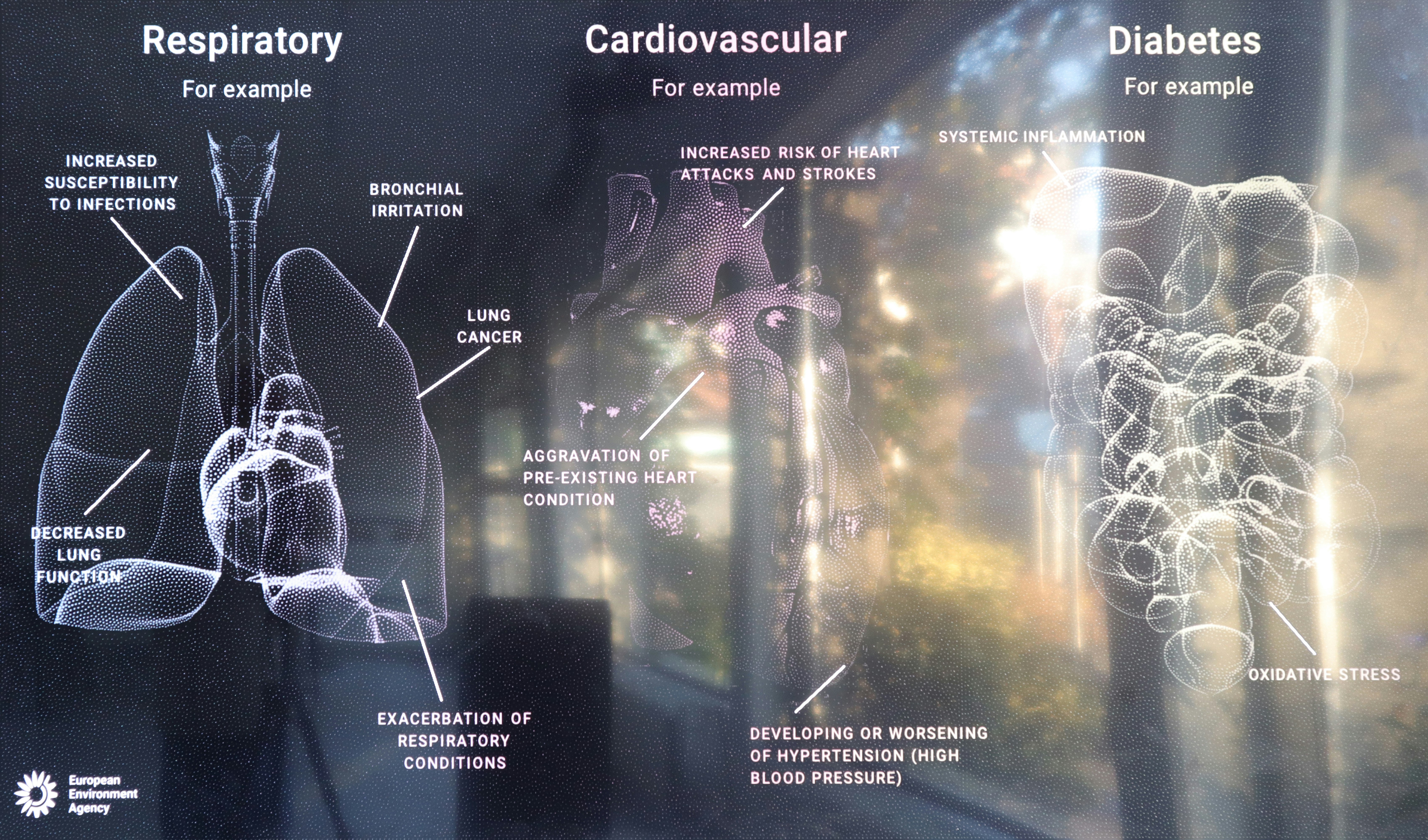The central theme of Frank van der Salm’s work is urban development as an expression of our time. Over the last 25 years, Van der Salm has travelled the world, focusing on urban landscape in its broadest sense. Aestheticism plays a major role in his work. It is the means by which he criticizes the urban world we now inhabit. NOWHERE, bringing together Frank van der Salm’s body of work from the past 25 years, is composed of two radically different parts. The Artificial Intelligence-driven installation, featuring all of his 241 images, is overwhelming and dynamic. It visualises the links between the works, based on their underlying meanings. The images themselves are immaterial. Behind the video wall lies the traditional, quiet museum world: the sphere of the ‘authentic’ works, each with it’s specific size and appearance. They are displayed in isolation from each other. Profusion is replaced by austerity and concentration, with no more than fourteen physical photographs and video works on show at any time. Here, Frank van der Salm’s aesthetic acts as a vehicle for his critical attitude towards the built environment.
In the 1990s Frank van der Salm aimed his lens at the landscape in order to record the human influence on it. Initially he followed in the tradition of the New Topographics, a movement that gained prevalence in the 1970s. Soon, however, he felt that the self-imposed restrictions – black and white, restricted format, the subject depicted sharply in focus and descriptively – was too limiting; Van der Salm started experimenting with colour, format, depth of field and scale. Until the mid-2000s the latter aspect was a distinguishing element of his visual language. The resulting alienation made the observer doubt whether this was an image or a scale model – an idealized model of reality, or an image of reality itself. In various guises, this has remained a characteristic of his work to this day. The central question always remains: which is the ideal image being pursued and what are the underlying values of it? Van der Salm himself indicates that his work – with the urban environment as its main subject matter – is a search for ‘who we are’. In other words: Frank van der Salm’s often impressive, aesthetic images are based on a critical cultural engagement.
We are currently living in a media society in which the image is omnipresent: experiences are guided by images we have seen before in the (social) media. In architecture this is taken a step further: buildings are increasingly designed (or cloned) with the eventual resulting image in mind. The traditional relationship between (physical) original and (digital) copy is reversed.
